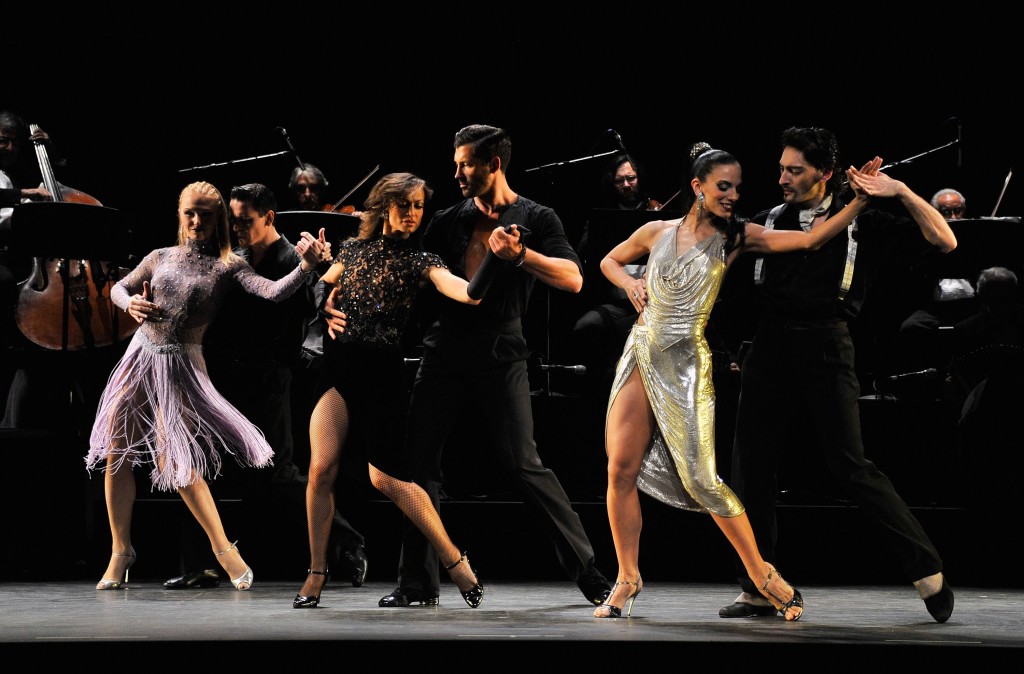
Forever Tango has finally come to Istanbul preceded by its worldwide fame: the show has captivated audiences on Broadway and has been nominated for several Tony Awards. Since opening in 1997, it is one of the most well-known tango shows with over 7 million viewers.
Istanbul is a city where Latin music is prominently featured in bars, clubs and dance courses. But tango is on a different level than salsa or bachata, so I was curious if the people of Istanbul would respond warmly to the somewhat more elitist dance. My doubt was quickly laid to rest. After the end of the first piece, the almost full theater at the Zorlu Center was swept away by the energetic atmosphere of the performance and the first clapping and cheering were heard. The show, a mix of theater, dance and music lead by a magnificent orchestra that carried the show with the utmost elegance, didn’t hold back and certainly lived up to its hype.
During the 26 pieces, which were spread out over two acts, stories of love, struggle and pain were told without any dialogue. The show really transported you to the darkest slums of Argentina. Everything started with “Preludio del Bandoneón y La Noche” (Prelude of the bandoneon and the night). We witnessed an amazing fight/dance man-to-man which reminded us that tango was, at it’s very beginning, a ballet-like dance between men. The next piece smoothly took us to “El Suburbio” (The suburb), set in a brothel, where we could attest how tango became the dance of the bordellos where both men and women were free to rub their bodies together. These pieces were presented with a highly elaborated group choreography. This was one of the two occasions (the other was in the brilliant closing set) when we saw all six couples dancing simultaneously. In this piece they danced to the same song but with each had their own choreography, so our eyes were struggling to capture all the details of the different interpretations of each couple.
The show walked us through the time when this dance, which originated in the urban, working-class neighborhoods of Buenos Aires around 150 years ago, was banned due to its strong sensuality and eroticism.
Between the dance pieces, the Argentinean singer Marcela Rios performed “El dia que me quieras” (The day that you love me), one of the most celebrated songs of the tango maestro Carlos Gardel, and “Uno” written by Enrique Santos Discépolo in 1943. She had an strong stage presence and was the ideal interlude between the dancing sets.
At one moment during the first act, the show seemed to suddenly stop. A woman’s voice in Turkish and English reminded us that taking pictures and videos was forbidden, perfectly timed with some annoying viewers taking videos and pictures from the first rows. One of the dancers, carrying a vintage camera, started to take pictures of the musicians and the public. When a pretty starlet appeared on the stage, he stalked her, also trying to take her pictures. Their battle quickly turned into a really amusing but impeccably choreographed dance. Natalia Turelli and Ariel Manzanares made up this duo and they provided a much-appreciated comic relief during the show, brilliantly mocking milonga and tango itself.
Directed by Luis Bravo, first cellist of the Argentine National Symphony Orchestra, Forever Tango it’s a show that has been touring for almost 20 years. So naturally it could easily be labeled as show for the masses. Having been lucky enough to witness street tango performances and theater shows in Buenos Aires, I felt that the show certainly tried to provide a wide range of performances to the uninitiated but at the same time being true to the spirit of the dance. It even took the time to present a couple of pieces of a more contemporary tango dance that mixes ballet and seemingly impossible stunts. The size of the show allows it to go over the evolution of the dance from the lively brothels to the exclusive Parisian dance halls, which could only be accessed the aristocracy. It also pays homage to the various genres that have influenced this sensual dance, such as the Candomble and Charleston.
In fact, the stage presence of the musicians and artists was so powerful that it didn’t even need any scenery to take us to the streets of the capital of Argentina. And the changes between a piece and the next one were fluid and smooth, so there were no bumps during the show. Even when there were no dancers on the stage, the music of the bandoneons kept the audience engaged with their powerful performances. Each dancing couple was sensual and had their own style: in one the man stood out more, in other it was the woman and her endless legs; the other was more passionate and erotic or one demonstrated more command of their routines.
The musicians and dancers received a standing ovation at the end after which they delighted the audience with a superb encore performance.










